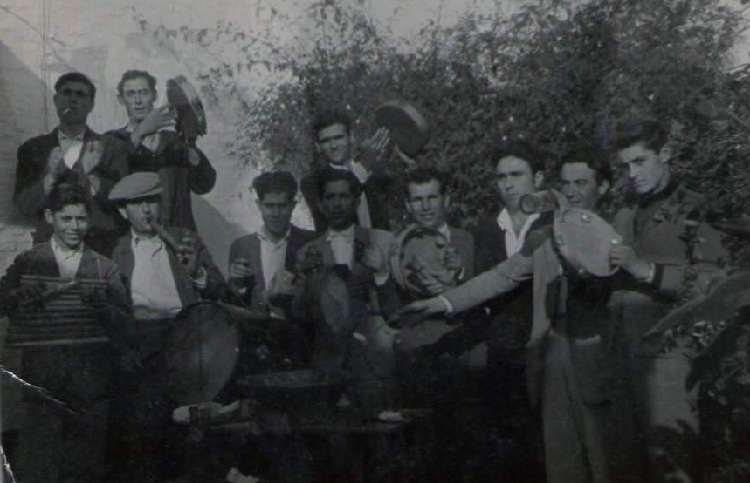Eduardo González
Just like the Christmas carol among English speakers, the Noël among French speakers or the Weihnachtslieder among German speakers, the “Villancico” is the Christmas song par excellence of the Hispanic world, in any of its languages and on both sides of the Atlantic. But it was not always like this, and the whims of the Royal House had a lot to do with it.
According to scholars, villancicos began to become popular in the 13th century, but those popular songs were not only not necessarily Christmas songs, but they were not even usually religious. They were, above all, “villa songs” (hence their name) that were sung during harvests and other festivities (including Christmas) and that, in the form of couplets, dealt with love, death, mockery, satire and other everyday stories of the villages.
The villancico burst onto the scene in Spain in the 15th century, especially in the Kingdom of Castile, where a similar genre had long been cultivated, the Hispano-Arabic zéjel, and where it had the support of such important poets as the Marquis of Santillana or Juan del Enzina.
However, the great leap forward occurred in the second half of the 16th century, when, in the midst of the Counter-Reformation, the villancico became the preferred genre of certain sectors of the Catholic Church that defended the teaching of the Gospels – including the birth of Jesus and, therefore, Christmas – through the approach to popular culture and the use of vernacular languages, instead of Latin. As a result, the cathedrals and the main parishes of Castile adopted the custom of hiring chapel masters to compose at least one Christmas villancico for each occasion.
As expected, this populist form of evangelisation generated, almost from the beginning, the rejection of the most conservative sectors of the Clergy, who were in favour of only spreading religious messages in Latin and with the due solemnity. The controversy even reached the House of Habsburg, and more specifically the Royal Chapel, which had also acquired the custom of composing its own Christmas villancicos each year.
In 1596, Philip II issued a Royal Decree that in the Royal Chapel “no Christmas villancicos or any romances should be sung, but everything should be in Latin as the Church has arranged.” Some authors (although there are discrepancies on this point) claim that the decree was observed “punctually” until the reign of Philip IV, when the custom of singing Christmas villancicos in the “vulgar language” was reintroduced, provided, of course, that the lyrics were previously approved by “learned men of ecclesiastical zeal” and that the music “was devout and free from affections that could make it indecent for the Temple,” according to a text from the period cited by the prestigious musicologist Jaime Moll.
In 1613, another great musicologist and priest, the Italian Pietro Cerone, wrote that, although the use of villancicos was not bad in itself, it was not good either, because “not only does it not invite us to devotion, but it distracts us from it, particularly those villancicos that have a great diversity of languages.” “Because hearing now singing in Portuguese and then in Biscayan, or in Italian and in German, first a gypsy and then a black, what effect can such music have except to force the listeners (even if they do not want to) to laugh and mock? And turn the Church of God into an auditorium of comedies and, from a house of prayer, into a room of recreation?”.
Once its first great obstacles in the Palace had been overcome, the villancico had already become so “professionalized” in the 17th century that it had become much more complex, both in its composition and in its interpretation, and, therefore, less popular. In Baroque Spain, the villancico had become the musical genre par excellence and was used for all kinds of religious events, such as saints’ festivals, Corpus Christi and, obviously, Christmas.
However, the genre suffered another royal attack in 1750, this time by a Bourbon, when Ferdinand VI ordered that villancicos should no longer be sung and that only responsories (liturgical psalm chants) composed by the chapel master Francisco Corselli should be sung on religious holidays. As a result, the villancico was no longer sung at the most solemn religious celebrations and was relegated to Christmas, which was more festive and, therefore, more popular.
In the 19th century, free of suspicion, prohibitions and freedoms under surveillance, the word villancico was already used solely to refer to Christmas villancicos, to which it was inextricably linked forever through lyrics that spoke of the birth of the Baby Jesus, the Virgin Mary, Saint Joseph, the shepherds, the Star of Bethlehem and the Three Wise Men. In the RAE Dictionary, the first meaning of the word villancico is “Popular song, mainly on a religious subject, sung at Christmas”. The other two, clearly residual, define it as “short popular song that frequently served as a chorus” and “a certain kind of poetic composition with a chorus”.







